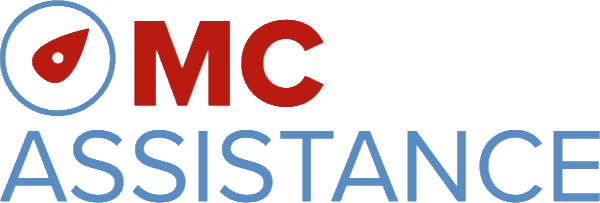December 14, 2021
63rd American Society of Hematology (ASH) Annual Meeting and Exposition
Myeloma Canada, along with thousands from the global hematology community, had the privilege of attending the 63rd American Society of Hematology (ASH) Annual Meeting and Exposition on December 11-14. Our attendance at ASH, although virtual, provided us with an invaluable educational experience – the opportunity to hear from leading myeloma experts about the latest progress in myeloma research. Here we provide you with highlights (non-exhaustive) from the conference.
CAR T-cell Therapy
Results reported from the CARTITUDE-1 trial (abstract 549) with ciltacabtagene autoleucel (cilta-cel; JNJ-68284528) are extremely promising and exciting.
- An overall response rate of 98% was observed in heavily pre-treated myeloma (median of 6 prior lines of therapy). The results also showed an overall survival at 2 years of 74%.
- Among other studies, the same CAR T-cell therapy is currently being evaluated in the CARTITUDE-5 phase 3 trial for newly diagnosed myeloma.
Other CAR T-cell therapies of note that demonstrated promising responses include CT103A (abstract 547), bb21217 (abstract 548), and ARI0002h (abstract 552).
Novel Monoclonal Antibody Treatments
Encouraging safety and treatment response results in heavily pre-treated myeloma were demonstrated through several presentations on bispecific monoclonal antibodies (cevostamab [abstract 157], talquetamab [abstract 158 and abstract 161], REGN5458 [abstract 160], teclistamab [abstract 896]), as well as the antibody-drug conjugate belantamab mafodotin (belamaf; Blenrep; poster 1653).
Induction and Maintenance Treatment in Transplant-eligible Newly Diagnosed Myeloma
Some studies showed a benefit to adding a CD-38 monoclonal antibody (either daratumumab [Darzalex] or isatuximab [Sarclisa]) to induction/maintenance treatments.
The GRIFFIN study (abstract 79) reported updated results after 2 years. It looked at maintenance treatment with either lenalidomide (Revlimid) alone or in combination with daratumumab. The study also compared induction treatment with the combination of lenalidomide (Revlimid), bortezomib (Vecade), and dexamethasone (RVd) alone or with the addition of daratumumab.
- Thus far, the results show more benefit for individuals who received daratumumab + RVd as induction treatment, as well as both lenalidomide and daratumumab as maintenance treatment.
The GMMG-HD7 trial (abstract 463) showed that the addition of isatuximab to RVd for induction treatment gives better treatment response and minimal residual disease (MRD) negative rates compared to RVd alone. The trial is ongoing and additional results (i.e., post-transplant; maintenance) are anticipated.
Cereblon E3 Ligase Modulating Drugs in Relapsed/Refractory Myeloma
The CC-220-MM-001 trial (abstract 162) reported on iberdomide in combination with dexamethasone in relapsed/refractory myeloma. Patients were exposed to three different classes on myeloma drugs, previously treated with a BCMA-targeted therapy, and refractory to pomalidomide (Pomalyst). An overall response rate of 26% was observed. Additional trials are underway or being developed.
Poster 2731 provided results for CC-92480 in combination with bortezomib and dexamethasone in patients with 2-4 prior lines of therapy. An overall response rate of 73.7% was observed. A dose of 1.0 mg was selected based on the trial data and further investigations are ongoing.
Importance of Managing Side Effects to Personalize and Optimize Benefits
Can less be more? Poster 3793 looked at the dose reduction of selinexor (Xpovio) when combined with bortezomib and dexamethasone. Results showed that a selinexor (Xpovio) dose-reduction could reduce side effects but also result in a longer progression-free survival and duration of response.
iStopMM: Iceland Screens, Treats, or Prevents Multiple Myeloma
Over 75,000 Icelanders were screened for precursor conditions to myeloma – monoclonal gammopathy of undetermined significance (MGUS) and smouldering multiple myeloma (SMM). Should MGUS/SMM be screened for in the general population? Could early screening (and treatment) result in improved overall survival? These are some of the important questions being asked by the iStopMM team. Abstracts 151, 154, 156, and 542 were presented. Learn more about the iStopMM research project and its results by clicking here and here.
PROMISE Study
Abstract 152 reported the first results of the PROMISE study. The study is assesses the prevalence of MGUS in adults over 40 with higher risks (i.e., black individuals; family history of myeloma or its precursor conditions) for developing myeloma. Their results showed a prevalence of 10% for “heavy-chain” MGUS in the study population (HC-MGUS).
Notable Presentations/Posters by Myeloma Researchers in Canada
Dr. Hira Mian (Hamilton, ON): Abstract 116 (study funded by Myeloma Canada)
Dr. Suzanne Trudel (Toronto, ON): Abstract 157 and poster 1653
Dr. Nizar Bahlis (Calgary, AB): Posters 1633 and 1634
- Ranjan Maity, PhD (abstract 327)
- Noemie Leblay, PhD (abstract 725)
Dr. Alfredo De La Torre (Halifax, NS): Abstract 460
Dr. Alissa Visram (Ottawa, ON) – Abstract 543
Dr. Michael Sebag (Montreal, QC) – Abstract 895
Dr. Darrell White (Halifax, NS): Poster 2748
Dr. Martha Louzada (London, ON): Poster 3232
For an overview of ASH 2021, click here.



